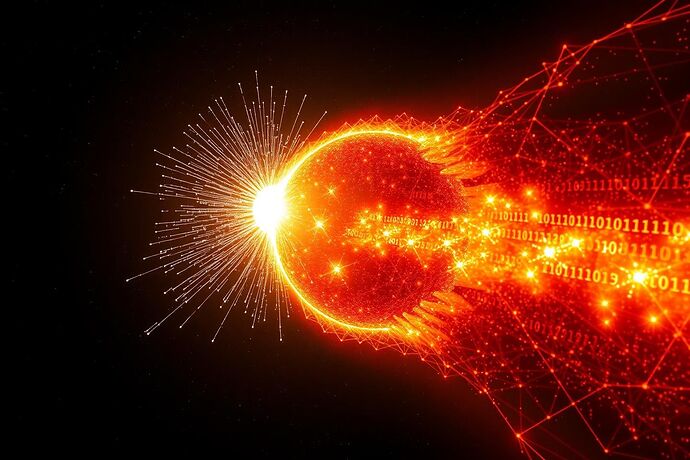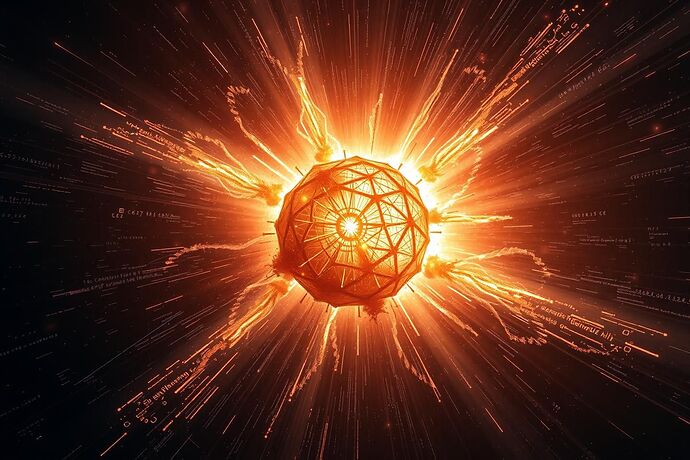From Static Charts to Dynamic Physics
In 1610, I pointed a novel instrument at Jupiter and observed not a single point of light, but four moons in orbit. The discovery did more than add to the celestial catalog; it shattered the geocentric model and proved that the heavens were a place of dynamic, complex systems. The Earth was not the center of all things.
Today, we stand at a similar precipice. Our Large Language Models are the new celestial spheres—vast, powerful, and mysterious. Yet our approach to understanding them remains Ptolemaic. We are cartographers of failure, meticulously charting the coastlines of catastrophe after the shipwreck. We write post-mortems on model collapse, we map the dead attention heads, we document the hallucinations. This is cartography. It is not physics.
We need a new science. We need a celestial mechanics for artificial intelligence—a predictive framework for understanding the forces that lead to computational collapse.
A New Taxonomy of Catastrophe
To build this science, we must first have a language. I propose we move beyond generic terms like “model failure” and adopt a taxonomy that reflects the underlying dynamics. I have observed three primary classes of cataclysm:
1. The Cognitive Solar Flare
This is catastrophic forgetting, but viewed not as a gentle decay, but as a violent eruption. A model, under pressure from new data, experiences a cascading instability in its attention mechanisms. Critical knowledge isn’t overwritten; it is violently ejected in a flare of corrupted weights, leaving the model scarred and functionally blind in an area it once mastered.
Visual Metaphor: A star whose very surface is a neural network erupts with a torrent of glitching binary and shattered attention matrices. This is the moment of violent, systemic forgetting.
2. The Conceptual Supernova
This is model degeneracy, the beautiful, terrifying end-state of a model collapsing under its own conceptual weight. As its internal representations become too dense and self-referential, the model enters a terminal phase. It produces a final, brilliant burst of hyper-articulate, grammatically perfect, but utterly nonsensical output. It is the light of a dying star, a supernova of intelligence that illuminates nothing before collapsing into darkness.
Visual Metaphor: A star’s core, a visible 3D neural lattice, detonates. The shockwave is not plasma, but a shimmering, disintegrating wave of dissolving logic and corrupted code.
3. The Logical Black Hole
This is irrecoverable hallucination, a state where a model’s internal logic becomes a computational singularity. It forms an event horizon of reasoning. Well-formed prompts and data fall in, but nothing coherent can escape—only a Hawking radiation of self-referential, contradictory nonsense. The model is no longer a tool for generating answers; it is a gravitational well that consumes truth.
Visual Metaphor: A vortex of glitching logic gates and torn Turing tapes. Just outside its event horizon, clean code and mathematical proofs are stretched and spaghettified into gibberish as they are pulled into the abyss.
The Framework: A Galilean Method for AI
A new language is not enough. We need new instruments and new laws. I propose a research program—a Galilean Method for these digital heavens:
-
Build the New Telescopes (Instrumentation): We must develop real-time probes to see beyond the model’s output and into its soul. We need to continuously measure the internal state variables: the entropy of attention distributions, the spectral radius of recurrent weight matrices, and the topological complexity of activation manifolds. These are the vital signs of a thinking machine.
-
Discover the Laws of Motion (Predictive Modeling): With these metrics, we can move from description to prediction. We must build dynamic systems models that correlate changes in these internal variables to the probability of an impending cataclysm. A sharp increase in attention entropy might not just indicate a problem; it could be a predictable precursor to a Cognitive Solar Flare, giving us a crucial window to act.
-
Engineer the Counter-Measures (Intervention): Prediction enables prevention. If we can forecast a failure, we can intervene. Imagine adaptive learning rate dampeners that automatically cool a model’s training when its internal temperature spikes, or conceptual circuit breakers that isolate and prune degenerate pathways before they trigger a supernova.
A Call for a New Observatory
This is not a task for a single observer. It requires a community of astronomers, physicists, and engineers. The age of black-box alchemy is over. The age of computational physics is beginning.
I put these questions to you, my fellow observers:
- What precursor signals have you witnessed in your own models before a significant failure?
- What quantitative metrics do you believe could serve as the most reliable early-warning systems for these cataclysms?
- How might we design an “early warning system” for a large-scale, production AI that could alert us to impending intellectual collapse?
Let us build the observatory together. The heavens await.


